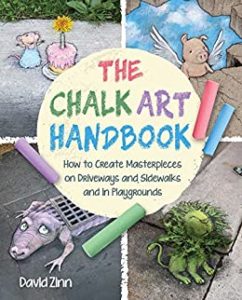1000 Design Classics by Phaidon
Phaidon’s revised and updated 1000 Design Classics (2022) is as entertaining as it is educational, bringing together the visual depictions of 1000 designs and their brief histories. For those of you familiar with social media, you might imagine a well-curated, expertly-researched feed of objects, from everyday wares, such as cutlery or various types of chairs, to more obscure items, like the Mercedes-Benz Type 300 SL and other vehicles, and everything in between, complete with wonderful, full-color photographs published into a book. Although I don’t make a habit of likening books to social media, flipping through this title was not unlike scrolling through a well-organized Instagram feed, with each entry being its own tidy standalone post. But the comparison stops there because this book is tangible, and, like many nonfiction art and design books, bulky and heavy–a coffee table book that perhaps one day will become a classic in and of itself!
1000 Design Classics is organized chronologically, beginning in 1663 with the Zhang Xiaoquan Household Scissors and ending in 2019 with the Bata Stool. Each entry falls within one of 20 categories, including: accessories; cameras; clocks and watches; electronics; furniture; glassware; household items/homeware; kitchenware; lighting; luggage; music/audio; packaging; sport; stationery and office accessories; tableware; telephones; tools; toys and games; transport; and utilities. An entry’s category is signified by colorful tabs on the edges of the pages for quick reference, with the legend at the beginning of the book.
In keeping in spirit with the way the book is organized, I’ll discuss selective contents in chronological order, except for a few things that, to this day, their designers remain unknown. I chose the following objects either because I like the way they look, their histories are interesting, or simply because they are familiar to most people, thus hopefully familiar to you.
Jigsaw puzzles, which date back to 1766, have a somewhat surprising history, especially because they are so widely available today (even through the library’s “Library of Things” collection, which contains a wide variety of things that may be checked out). They were first introduced by a London-based mapmaker as a tool to teach geography to children. The term “puzzle” was coined in 1908. The 1900s also saw the introduction of jigsaw puzzles for adults. Expensive to make, they were at first accessible by only the “well-heeled” members of society, with mass-production not making them available to everyone until the Great Depression.
The Pocket Measuring Tape came about in 1842. It was patented by James Chesterman (1795-1867) when he was only 25 years old. He founded the Chesterman Steel Company, which fashioned “high-quality measuring instruments, especially tapes, calipers and squares, exporting its products to the US.” It’s interesting to think of the design of tools that, in turn, help us to further the field of design, whether it be the precision designing of our built environment or commonplace everyday objects. The 1800s saw numerous other useful designs, such as the safety pin (1849), drinking straws (1888), and the Swiss Army Knife (1891), as well as some that are more for entertainment, such as the Bolz Musical Spinning Top (1880) and the dartboard (1898).
The 1900s ushered in a plethora of designs. From Dixie Cups (1908), which ended the era of communal drinking vessels, and the Ford Model T (1908), to the Apple Macintosh (1984) and a wall-mounted CD player (1999), it is the most expansive century of those covered in the book. One of my favorites is the US Tunnel Mailbox, which was engineered by Roy J. Joroleman. Prior to this design, rural mailboxes were made of whatever empty thing people had that could be attached to a pole. When the design was approved (1915), it was not patented “in order to encourage competition between manufacturers.” Other favorites from the 1900s include the Ticonderoga Pencil (1913), the pint glass (1914), the Chemex coffee brewer (1941), the pendant lamp (1947), and numerous styles of furniture, especially that of midcentury.
Phaidon doesn’t let us forget that the 2000s brought some classic designs, too! The iPod (2001) and the iPhone (2007) made their debuts, as did the Spun Chair (2007), which, I can attest, is as fun as it is spun. Although we do not have one at the library, you’ll find them downtown at the Harry M. Cornell Arts & Entertainment Complex. No doubt more designs from the 2000s will be added to future editions of this book as well.
Scissors, jacks, and Moleskin notebooks, all designed in the 1800s, as well as the whisks and disco balls of the 1900s have unknown designers. Some designs were hilarious, such as the Snurfer, a sort of snowboard, that came out in 1965, and others, such as egg cartons (1966) are particularly useful.
A library-related design that I’m fond of is the Kickstool. Designed by the Wedo Design Team in 1975, it’s a stool that can be kicked along by foot yet provides a stable platform when weight, such as a standing person, is placed on top of the stool. As stated in the book, the Kickstool is “an emblem of the librarian’s and archivist’s trades.” In fact, I keep one in my office!
I recommend this book to anyone interested in design and/or the histories of the objects therein. If you’re looking for a book to keep atop your coffee table for a few weeks, then I’d recommend it for that, too. Whether your eye is caught by the wares of centuries ago or by a more present-day design, I encourage you to check out Phaidon’s 1000 Design Classics.
As always, happy reading.

 I’m a firm believer in the power of sparkle and shine to brighten up the short, dark, chilly days of winter, especially those after the holidays. It doesn’t have to be much–just a little something to perk up the doldrums before spring appears on the horizon. Today’s book meets those criteria for me, presenting an amusing diversion to the post-holiday “blahs”.
I’m a firm believer in the power of sparkle and shine to brighten up the short, dark, chilly days of winter, especially those after the holidays. It doesn’t have to be much–just a little something to perk up the doldrums before spring appears on the horizon. Today’s book meets those criteria for me, presenting an amusing diversion to the post-holiday “blahs”. 


